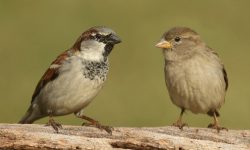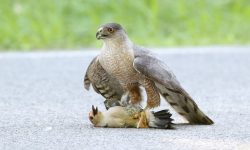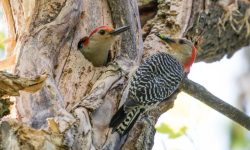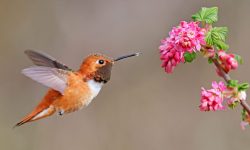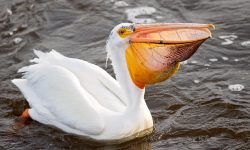Owls are among the most iconic nocturnal predators on Earth. With silent wings, piercing eyes, and razor-sharp talons, they dominate nighttime skies across forests, deserts, grasslands, and tundra. But what fuels this stealthy hunter? The answer lies in a highly varied diet tailored to each species and habitat.
In this article, we explore the top 10 prey animals that owls can’t resist, along with fascinating facts about how they hunt and consume each type. Whether you’re a bird lover, student, or wildlife enthusiast, this guide offers a close look at the feeding behavior of one of nature’s most efficient hunters.
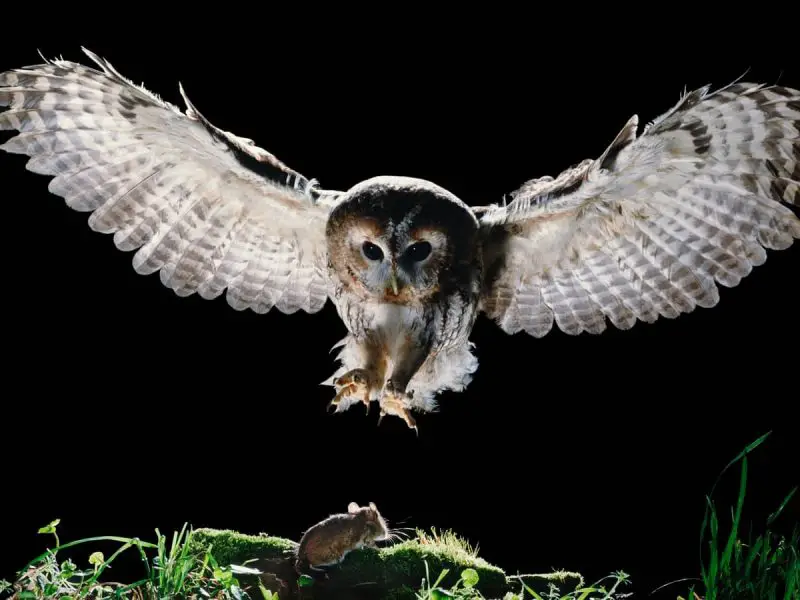
1. Rodents: The Owl’s Favorite Staple
Mice, Voles, and Rats Rule the Nighttime Menu
When it comes to satisfying hunger, few things please an owl more than a plump rodent. Mice, voles, rats, and shrews top the list for many species, including barn owls, great horned owls, and long-eared owls. These small mammals are everywhere—scurrying through fields, burrowing under snow, or sneaking beneath leaves—which makes them easy pickings for a patient, sharp-eyed hunter. And they’re not just plentiful—they’re packed with protein, making them the perfect fuel for hungry adults and growing chicks. In fact, a single barn owl family can devour over a thousand rodents in one breeding season alone.
Hunting with Precision and Silence
Owls don’t chase their prey like falcons or hawks. Instead, they wait, listen, and strike with eerie precision. Their asymmetrical ears allow them to triangulate sound in three dimensions, even picking up the tiniest rustle beneath a blanket of snow or thick grass. Once locked in, they launch silently into the air, gliding ghost-like before crashing down with deadly accuracy. One second it’s quiet, the next—a rodent is gone without a sound.
2. Small Birds
Feathers on the Night Menu
While rodents may be the go-to meal, owls don’t pass up the chance to snag a small bird when the opportunity arises. Species like the northern hawk owl and great horned owl are particularly skilled bird hunters, often targeting songbirds such as sparrows, thrushes, starlings, and even the occasional unwary raptor. These feathered meals become especially tempting during the breeding season, when fledglings crowd nests and branches, vulnerable and not yet skilled in flight.
Silent Ambush from the Shadows
Owls turn stealth into an art form. Rather than chase their prey through the air, they wait. Hidden in darkness near a nesting site or roosting tree, they observe, motionless and watchful. Then, without a single warning sound, they launch. Thanks to their soundless wingbeats and ghost-like glide, their prey rarely sees or hears them coming. By the time the target flutters in panic, it’s already too late—another silent strike ends in a puff of feathers.
3. Insects and Beetles
Crunchy but Nutrient-Dense
For many smaller owl species, like the eastern screech owl and the tiny elf owl, insects are the main course of the night. These owls feast on a buzzing buffet of beetles, grasshoppers, crickets, moths, and plump caterpillars. In warm regions—especially deserts and tropical forests—this insect diet dominates, offering a rich source of protein, fats, and hydration with every crunchy bite.
Swift, Sharp, and Opportunistic
Don’t let their size fool you—these insect-eating owls are lightning fast. Perched quietly on a branch, they watch the ground like statues until the moment is right. In a flash, they drop down to snatch crawling bugs or zip through the air to pluck a moth in mid-flight. With wide, forward-facing eyes and exceptional reflexes, they turn darkness into their personal hunting ground. When it comes to chasing bugs, they’re part sniper, part ninja.
4. Amphibians: Frogs and Toads
Moist and Easy to Catch
When night falls over swamps, wetlands, and forest ponds, the air fills with the croaks and chirps of frogs—and owls are listening. In these damp, shadowy habitats, species like the barred owl patrol silently above the water’s edge, waiting for the slightest splash or twitch in the reeds. Frogs, toads, and salamanders become irresistible targets, especially during breeding season when amphibians are out in large numbers and less cautious than usual.
Soft, Slow, and Satisfying
For an owl, a frog is like a ready-made snack—slow, squishy, and easy to swallow. Unlike hard-shelled prey that needs to be broken down, amphibians offer soft, protein-rich flesh with minimal effort. Since they’re also nocturnal, frogs and owls often cross paths, making these slippery creatures a reliable and energy-efficient meal. In the world of night hunting, few things are as tempting—or as easy—as a frog sitting still in the moonlight.
5. Reptiles: Lizards and Small Snakes
Scaly Prey in Warm Climates
In sun-baked deserts, grassy savannas, and tropical forests, owls sometimes trade fur and feathers for scales. Reptiles like lizards, geckos, and small snakes often fall victim to skilled hunters such as the burrowing owl and the spotted owl. These cold-blooded creatures are most active in warm climates, where their movements make them stand out against the earth—exactly what a sharp-eyed owl is waiting for.
Precision Strikes with Crushing Power
Catching a squirming snake or darting lizard takes perfect timing—and owls have it down to an art. With eyes locked in, they descend fast and strike with talons that clamp like a vice. Their grip is strong enough to subdue even the most restless reptile. Some are swallowed whole, others torn into manageable pieces. Whether it slithers, crawls, or clings to bark, if it moves and fits in a beak, it’s fair game.
6. Fish (For Specialized Owls)
A Rarity Among Owls
Most owls shy away from water, but a few bold species have made fish their specialty. Towering among them is the Blakiston’s fish owl—one of the largest and rarest owls on Earth. Alongside its close relatives in the Ketupa genus, these riverbank hunters patrol forested streams and rocky shorelines in search of slippery, cold-blooded prey. While fishing owls are uncommon, their mastery of aquatic hunting sets them apart in the owl world.
Eyes on the Current, Talons at the Ready
Perched motionless on a branch above a moonlit river, the fish owl watches. Its gaze is sharp, its patience endless. Then—splash. A shadow flickers beneath the water’s surface. In a blink, the owl dives talons-first, striking the fish with incredible speed and precision. Sometimes it wades into shallow water to grab fish directly. With a mix of visual tracking and tactile sensitivity, these owls have turned fishing into an elegant nighttime art form.
7. Bats
Hunting Prey in the Air
In the fading light of dusk, when bats begin to pour from caves and hollow trees, some owls are already waiting. In tropical and subtropical regions, species like the barn owl have developed a taste for these fast, unpredictable fliers. While bats are agile and alert, they make tempting targets for owls skilled in aerial pursuit and ambush.
Aerial Ambush with Surgical Accuracy
Snatching a bat mid-flight is like catching a whisper in the dark—but owls are built for it. With wings that move without a sound and eyes that pierce the shadows, they patrol the skies with ghostly grace. Their broad, forward-facing vision and razor-sharp reflexes allow them to react in milliseconds. A single, silent dive through the night air—and the bat never sees it coming. It’s a contest of flight, and the owl almost always wins.
8. Spiders and Large Invertebrates
A Creepy-Crawly Supplement
In dry deserts and scrubby grasslands, where mice are rare and frogs are nowhere to be found, owls turn to the next best thing: crawling, creeping invertebrates. Spiders, centipedes, scorpions, and beetles may not seem like much, but to smaller owls like the burrowing owl, they’re a valuable source of protein, moisture, and survival. These crunchy critters fill the nutritional gap when larger prey is scarce or seasonally unavailable.
Ground Hunters on the Move
Unlike most owls that hunt from above, burrowing owls take the chase to the ground. With long legs and sharp eyes, they dash after prey across open sand and cracked earth. They dart, pause, pivot, and pounce—sometimes mid-sprint—snagging fast-moving arthropods with precision. Whether it’s a shimmering beetle or a darting scorpion, nothing that scuttles is safe when a hungry owl is nearby.
9. Crustaceans: Crabs and Crayfish
Coastal and Riparian Opportunists
Along coastal marshes, tidal flats, and swampy riversides, some owls break from tradition and go shell-hunting. Though not a primary food source, small crabs and freshwater crayfish offer a crunchy, nutrient-rich bonus in wet seasons. Species like the Blakiston’s fish owl and even barred owls have been spotted plucking these armored morsels from shallow pools when the timing is right.
Wading with Purpose, Striking with Speed
With eyes fixed on the water’s edge, an owl may perch low on a branch or even step into the shallows, waiting for just the right flicker beneath a stone. A sudden lunge—a quick jab of the talons—and up comes a wriggling crayfish or scrambling crab. Despite their tough shells, these prey offer valuable protein and minerals, especially calcium. For the owl, it’s a rare but welcome coastal treat—fresh, crunchy, and caught with precision.
10. Carrion and Scavenged Meat
Not Typical, but Possible
Owls are known as skilled hunters, not scavengers—but when prey is scarce and winter is cruel, even the fiercest predators make compromises. While they don’t seek out carcasses like vultures do, owls—especially great horned owls—have been observed feeding on roadkill, frozen remains, or leftovers from other carnivores. In the wild, survival often means adapting, and for some owls, a free meal is better than none.
Cautious and Calculated
Scavenging comes with risks, and owls know it. They approach cautiously, often under the cover of twilight or fog, scanning for danger before descending. Unlike bold scavengers, owls tend to avoid exposed areas and rarely linger. A few bites from an abandoned carcass might be all they take before vanishing into the dark once more. For them, carrion is not a preferred dish—it’s a backup plan, used only when hunger outweighs instinct.
How Do Owls Digest Their Food?
The Pellet Process
Owls are not picky eaters when it comes to how they consume their meals—they often swallow prey whole, whether it’s a mouse, beetle, or small bird. But not everything they ingest can be digested. Bones, teeth, fur, feathers, insect shells, and claws are too tough for their digestive system to break down.
Instead of passing these materials through their intestines, owls have a clever adaptation. After the soft tissues of their prey are dissolved and absorbed in the stomach, the indigestible parts are compressed in the muscular gizzard into a tight, lightweight mass called a pellet. Several hours after eating, the owl regurgitates the pellet through its mouth, often from a perch or near its roost.
This process doesn’t harm the bird—in fact, it’s vital for keeping its digestive system clear. Owl pellets are not waste in the traditional sense but scientific goldmines. By examining these pellets, researchers and birdwatchers can determine exactly what an owl has eaten, how often it feeds, and even what species are present in its hunting range. It’s nature’s forensic evidence, wrapped in a tidy little package.
Final Thoughts: A Diverse and Deadly Diet
From rodents and birds to amphibians, insects, and even fish, owls are adaptable predators capable of exploiting a wide range of food sources. Their hunting techniques are as varied as their prey, combining silent flight, acute vision, and lethal precision.
Understanding what owls eat helps us appreciate their role in ecosystems as both predator and population controller. Whether they’re gliding through a forest canopy or perched silently on a barn beam, owls remain one of nature’s most fascinating and efficient nocturnal hunters.

